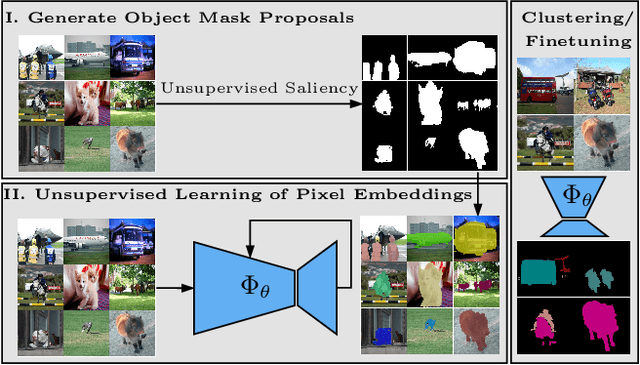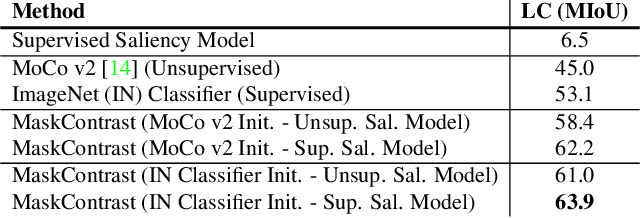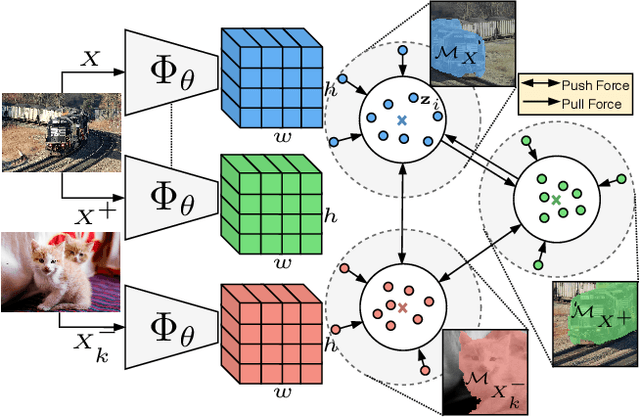Unsupervised Semantic Segmentation by Contrasting Object Mask Proposals
Paper and Code
Feb 11, 2021



Being able to learn dense semantic representations of images without supervision is an important problem in computer vision. However, despite its significance, this problem remains rather unexplored, with a few exceptions that considered unsupervised semantic segmentation on small-scale datasets with a narrow visual domain. In this paper, we make a first attempt to tackle the problem on datasets that have been traditionally utilized for the supervised case. To achieve this, we introduce a novel two-step framework that adopts a predetermined prior in a contrastive optimization objective to learn pixel embeddings. This marks a large deviation from existing works that relied on proxy tasks or end-to-end clustering. Additionally, we argue about the importance of having a prior that contains information about objects, or their parts, and discuss several possibilities to obtain such a prior in an unsupervised manner. Extensive experimental evaluation shows that the proposed method comes with key advantages over existing works. First, the learned pixel embeddings can be directly clustered in semantic groups using K-Means. Second, the method can serve as an effective unsupervised pre-training for the semantic segmentation task. In particular, when fine-tuning the learned representations using just 1% of labeled examples on PASCAL, we outperform supervised ImageNet pre-training by 7.1% mIoU. The code is available at https://github.com/wvangansbeke/Unsupervised-Semantic-Segmentation.
 Add to Chrome
Add to Chrome Add to Firefox
Add to Firefox Add to Edge
Add to Edge